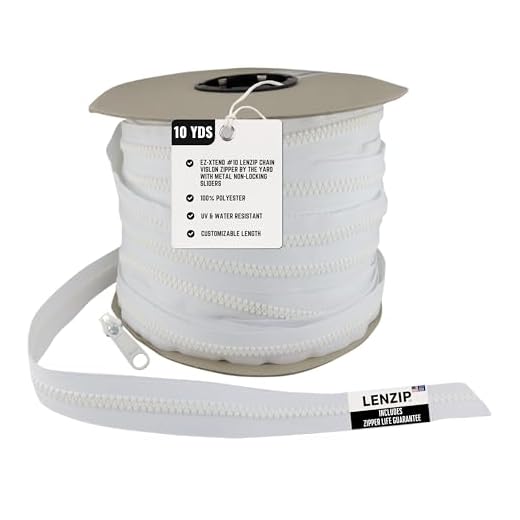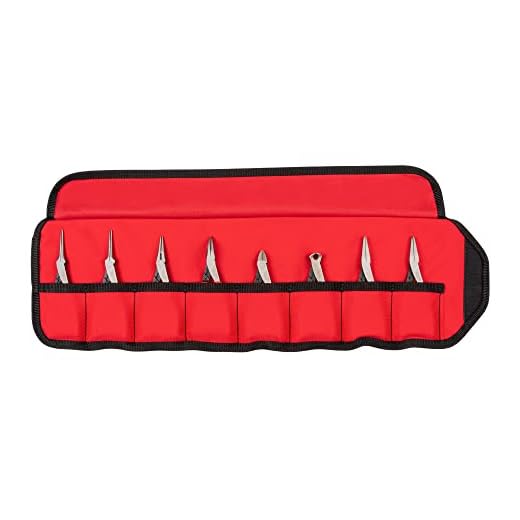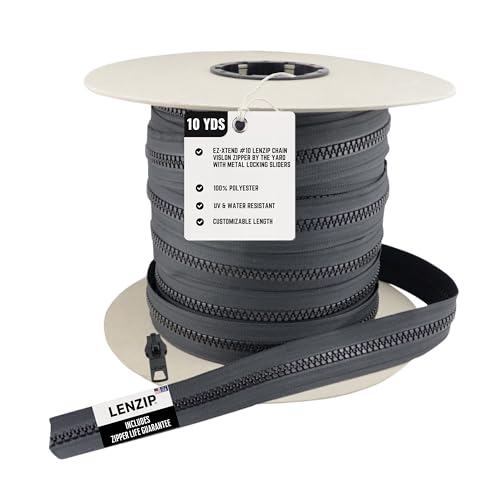



Immediate action: fit a metal replacement slider matching the tooth gauge (common sizes: #3 ≈ 3 mm, #5 ≈ 5 mm, #8 ≈ 8 mm), use 4 mm needle‑nose pliers to realign the slider and crimp new top stops; expected time: 10–25 minutes.
Quick diagnosis: run the slider along a 10 cm section and watch for gaps greater than 1–2 mm, teeth misalignment, or a wobble of more than 2 mm across the track. To verify gauge, measure the closed teeth width with calipers or a ruler: ~3 mm = #3, ~5 mm = #5, ~8 mm = #8. If teeth are missing across a 2–3 cm segment, plan for part replacement rather than only tightening.
Temporary measures: apply pencil graphite across the teeth or rub a thin layer of beeswax/candle wax to free a stuck slider; alternatively use one short burst of silicone spray, wait 30 seconds, then cycle the slider 6–8 times. For a loose slider, compress the sides in 0.5 mm increments with pliers and test after each squeeze. Protect surrounding fabric with a scrap of cardboard while working.
Durable method: remove top stops by cutting or prying with diagonal cutters or a small flat screwdriver, slide off the old slider, install the replacement in the same orientation, then secure top stops by crimping a new metal stop or stitching a reinforcement patch. Use heavy nylon thread (upholstery or Tex 70), make 6–8 passes through a 20×15 mm leather or synthetic patch, and apply a drop of superglue gel to lock stitches; allow glue to set 5 minutes. If using crimp stops, crimp twice for a secure hold and trim any sharp edges.
Field maintenance and checklist: carry one spare metal slider, a short length of heavy thread, needle‑nose pliers, and a pencil for graphite. Re‑lubricate high‑use items every 3 months and inspect stops and stitch points after trips; replace the slider when wear produces a horizontal gap exceeding 2 mm under light tension.
Diagnose the zip fastener fault: jammed slider, missing teeth, separated tape
If the slider will not traverse the chain, inspect for fabric or thread caught between teeth and for deformed elements; remove obstructions with fine tweezers and test movement – if the slider still fails to close the gap within 1–2 mm, continue with targeted checks below.
Visual and tactile checks
Use a bright light and 10x loupe or smartphone macro to identify type (coil, metal, molded) and count consecutive absent teeth: for metal chains, ≥2 consecutive missing teeth usually disables proper engagement; for nylon coil, ≥4–6 missing coils typically causes persistent separation. Measure tooth width to identify size: #3 ≈3 mm, #5 ≈5 mm, #8 ≈8 mm, #10 ≈10 mm – match the slider channel to this number when sourcing parts. Check for bent teeth by running a flat probe along the closed chain; any tooth that does not sit flush can stall the slider.
Slider fit and tape integrity
Measure slider action by closing from the top down: if the two halves are not drawn together to within 1–2 mm of fully closed, the slider is worn or misaligned. Gently pinch the slider body with needle‑nose pliers to reduce internal clearance in 0.5 mm increments and re-test movement rather than aggressive clamping. For separated tape, measure seam detachment length: if separation exceeds 15 mm or fabric shows fraying, the tape or seam stitch has failed. Apply a steady pull of about 20–30 N (≈2–3 kgf) to the tape section to confirm whether the attachment point holds or elongates; slippage indicates degraded tape adhesive or stitching. Photograph failures and include external references when documenting for parts or service, e.g. are drones legal in kenya.
Free a stuck slider with wax, graphite, or soap: quick, measured steps
Rub a thin bead of beeswax or paraffin, rub a soft graphite pencil lead along the teeth, or trace a white bar soap along the track; then move the slider gently up and down in short strokes (10–20 passes) until it slides freely.
Recommended materials: beeswax stick or a plain paraffin candle, a soft graphite pencil (2B–6B), an unscented white bar soap (no dyes), a soft toothbrush, cotton swabs, tweezers, and a lint-free cloth.
Clear the jam area first: use tweezers to remove threads or debris from between teeth, then brush the track with the toothbrush for 10–15 seconds. Work only on the teeth and slider body; avoid rubbing lubricant onto the fabric tape to prevent staining.
Wax method: rub the candle or beeswax directly along both sides of the teeth in a 3–5 mm wide line across the stuck region. Press the slider gently against the treated area and perform short, controlled strokes–do not yank. If the slider moves a little, repeat the wax application and do another 10–20 strokes. Wipe excess wax with a cloth and run the slider 5 full cycles to redistribute lubrication.
Graphite method: hold a soft pencil flat and rub several strokes of graphite into both rows of teeth, concentrating at the jam point. Move the slider slowly back and forth; graphite dries and lubricates without transferring grease. If needed, add more graphite and work the slider until resistance drops to a smooth, light feel.
Soap method: rub the soap bar lightly along the teeth (thin coating only). Work the slider with short, even strokes; if the lining or colored fabric is nearby, perform a small patch check first. After freeing, remove residual soap with a damp cloth and dry immediately. Repeat any method up to three cycles; if the slider remains immobile after that, stop to avoid damage.
Realign misaligned teeth and close gaps with pliers and slider repositioning
Compress the slider rails 0.5–1.0 mm with a cloth-wrapped flat-nose pliers, then run the slider slowly over the problem zone to check engagement.
Tools and setup
Required: flat-nose pliers, needle-nose pliers, small flathead screwdriver, soft cloth, 15–20× magnifier or strong light, ruler with millimetre marks. Work on a firm, flat surface and secure the tape so it does not shift.
Step-by-step correction
1) Locate the first tooth gap: measure distance from the last correctly engaged tooth to the start of separation; mark tape 5 mm above that position for later reference.
2) If the slider channel is loose (teeth pass through but do not lock), protect slider with cloth and pinch the two outer rails inward by 0.5 mm increments using flat-nose pliers; check after each pinch by moving the slider 2–3 cm across the teeth. Stop when teeth mesh cleanly without excessive resistance.
3) For individual bent teeth, use needle-nose pliers to nudge the tooth crown back toward the mating profile. Apply lateral pressure only; avoid pulling tape or crushing the tooth. Aim to restore the tooth profile so its ridge aligns within ±0.5 mm of its counterpart.
4) If teeth are separated because slider has come off track, remove the top stop with the flathead screwdriver or pliers, slide the slider off the tape, realign teeth by hand so both rows meet along the marked reference, then reinstall the slider aligning its wider end to the folded side of the tape. Test by moving slider across the repaired zone 5 times.
5) Recreate a top stop: crimp the original metal stop back in place using flat-nose pliers so it sits 2–3 mm above the last tooth; if the stop is damaged, fold a 5 mm metal clip or sew 6–8 tight passes of heavy polyester thread to form a secure stop.
6) Final check: run the slider from end to end 10 full cycles under light load (hold both sides of the tape) and inspect teeth alignment with magnifier. If any sticking or new gaps appear, reverse the last plier adjustment by 0.25–0.5 mm and retest.
Tip: For metal teeth, avoid repeated heavy crimps; small incremental adjustments preserve tooth geometry. For molded plastic teeth, focus on reshaping individual teeth rather than over-compressing the slider.
Replace a damaged slider with a matching universal slider step by step
Tools and materials
Universal replacement slider sized to match fastener nominal size (common sizes: #3 ≈ 3mm, #5 ≈ 5mm, #8 ≈ 8mm) and tooth type (coil, molded/resin, metal); 1 pair needle-nose pliers, 1 pair flat-nose pliers, seam ripper or small sharp scissors, small caliper or ruler (±0.5 mm), replacement metal top/bottom stops or crimp-on stoppers, heavy-duty polyester or nylon thread (bonded upholstery or size 40–69), hand-sewing needle size 18–22, optional small hammer and steel block.
Step-by-step replacement
1. Verify size: close the fastener and measure width across interlocked elements with caliper; select slider marked for that nominal size and for the element type (coil vs molded vs metal).
2. Remove original stops: using flat-nose pliers uncrimp metal top stops or cut stitched stops with a seam ripper leaving 3–4 mm of tape beyond the cut; for separating fasteners remove the bottom stop instead so halves separate.
3. Extract the old slider: grip the pull tab with needle-nose pliers and slide it off the teeth. If it resists, slide it toward the removed stop position and withdraw from track; do not yank across teeth to avoid fraying the tape.
4. Fit the new universal slider: orient the slider so the pull faces outward and the wider channel matches the joined elements’ profile. Insert one side of the teeth into the corresponding channel, then press the second side in while gently pulling the pull tab about 10–20 mm to seat the slider onto the elements; for open-end styles join halves first and then engage the slider.
5. Reinstall stops: position a replacement metal stop 2–3 mm beyond the slider closed position and crimp firmly with flat-nose pliers (two firm crimps at 90° will lock most stops). If using thread, sew a stopper with at least 6 dense backstitches through tape 3–4 mm wide, tie a reinforced knot, and melt a tiny bit of thread end if synthetic.
6. Align and test: cycle the slider up and down 8–10 times while observing element alignment and smooth travel. If the slider slips over the stop, move the stop 1–2 mm outward and re-crimp or add a second stop; if elements separate behind the slider, replace with next size up.
7. Finalize: trim any excess tape 5–7 mm past the stop if desired and seal the raw edge with a lighter (nylon tape only) or apply a dab of clear fabric glue to prevent fray. For metal tape, fold the remaining tape and sew a small box stitch over the fold for reinforcement.
Splice missing teeth and add new stops
Cut away the damaged section so three to four intact teeth remain on each side, overlap the tape edges by 8–12 mm, then secure the overlap and crimp a new stop 6–8 mm past the last good tooth.
Tools and materials: flat‑nose and needle‑nose pliers, diagonal cutters, heavy upholstery or bonded nylon thread (Tex 70–138 / size #69 recommended), curved sewing needle or awl, metal zipper stops (3–4 mm width) or nylon end stops, small stainless steel rivets (2–2.5 mm shaft) and a handheld rivet setter or snap pliers, optional replacement slider.
For coil (nylon) tracks: unthread the slider and trim back to stable fabric. Overlap the two cut tape ends 8–12 mm so the coil spiral meshes without kinking. Use a zigzag stitch by hand or a heavy‑duty sewing machine, sewing 3–4 rows across the overlap and backstitching at each end. If sewing is impossible, insert a 2.5 mm rivet through the overlapped tape 4–5 mm from the coil edge and set flush; place one rivet on each side of the coil for shear strength.
For molded plastic or metal teeth: remove all fractured teeth with diagonal cutters and file rough edges. If missing teeth are at the very end, cut the tape just past the last good tooth and add a metal stop. For central missing teeth, splice by overlapping tape as above and replace the slider with one sized to accept the slightly thicker splice (universal replacements often work). Avoid forcing a standard slider over a bulky splice; choose a one‑size‑up slider when necessary.
Installing new stops: slide a metal stop onto the tape, position it 6–8 mm from the last intact tooth, and crimp flat with flat‑nose pliers in two perpendicular squeezes to avoid twisting. For heavier loads or travel items use a double stop (two stops side‑by‑side) or set a rivet through the tape folded over and crimped. Nylon end stops are pushed on and then compressed with special pliers; verify they bite into the braid and do not slip under tension.
Finishing: reinstall the slider and cycle it across the splice slowly; if binding occurs, open the splice, trim 1–2 mm and resew or reset rivets. Apply a drop of clear fabric glue along sewn edges to prevent fraying, and trim excess thread. For luggage and large-gear applications consider reinforced tape or adding a small leather patch over the splice area for abrasion resistance – see best luggage for large men for heavy‑duty examples.
Install a temporary pull and reinforce stitching to prevent recurrence
Attach a 3–4 cm loop of 1.8–2.0 mm paracord to the slider with a double overhand knot, melt the cut ends and cover 10 mm of the loop with 6 mm heat‑shrink tubing for a durable temporary pull.
- Tools & materials: 1.8–2.0 mm paracord (or split keyring + 2 mm cord), 6 mm heat‑shrink (10–12 mm length), lighter, small pliers, sewing awl or heavy needle, bonded nylon/polyester thread (0.5–0.8 mm / 69–92 wt), leather/cordura patch (3×3 cm), superglue or fray‑stop liquid, optional rivets and setter.
- Why a cord pull: provides leverage with minimal bulk and prevents repeated stress on the original pull tab or slider body.
- Make the temporary pull:
- Feed cord through slider hole, form a 3–4 cm loop and tie a double overhand or figure‑eight finish.
- Trim ends to 2–3 mm, melt lightly with a lighter to fuse, then slide heat‑shrink over the melted ends and activate with heat for a neat, non‑slipping finish.
- Reinforce stitching at the tape/fabric junction:
- Place a 3×3 cm leather or cordura patch on the bag side where the tape meets the fabric; glue the patch with a thin bead of superglue and press for 30–60 seconds to set.
- Using a sewing awl or heavy needle, stitch through the patch, tape and outer fabric with bonded nylon thread doubled for strength. Execute a bar‑tack: 8–12 closely spaced passes (no more than 2 mm stitch spacing) over the high‑stress line.
- Finish with three locking stitches and seal the knot with a dab of fray‑stop or superglue on the underside; trim excess thread.
- Optional metal reinforcement for heavy use:
- Punch a pilot hole, install a 3–4 mm rivet or snap rivet through the patched area and tape, set with a hand rivet setter. Use a washer on the inside if the fabric is thin.
- Test pull strength by applying steady 15–20 kgf; re‑stitch or add a second rivet if movement appears.
- Maintenance tips:
- Check the tack monthly after heavy trips; re‑apply heat‑shrink or add a second bar‑tack if stitches abrade.
- For long trips consider a permanent upgrade to the tape and stops; see options and gear at best luggage for backpacking europe.
Expected durability: a properly tied cord pull plus a 8–12 pass bar‑tack and small patch will withstand normal daily use and loads up to ~20 kgf; add rivets for frequent heavy loading or extended travel.







